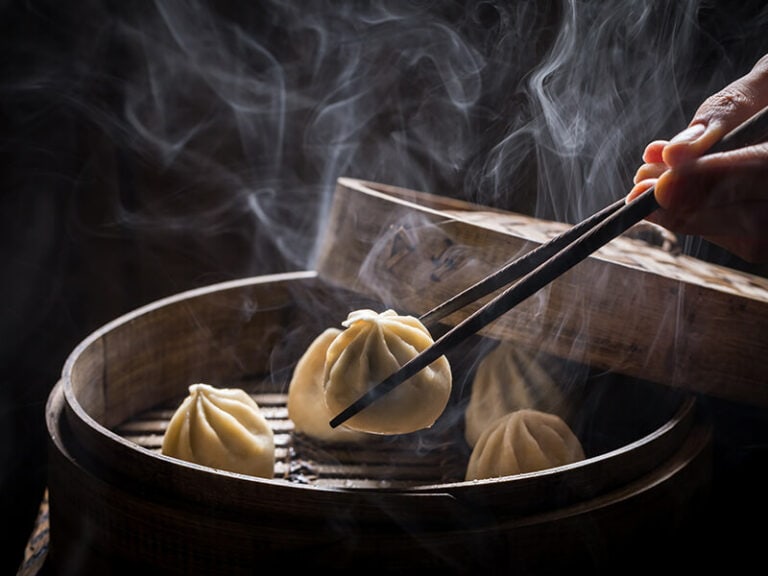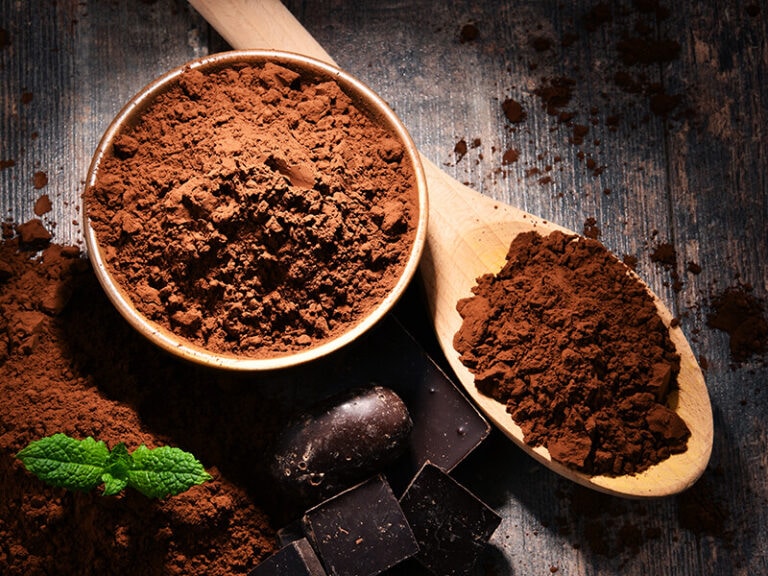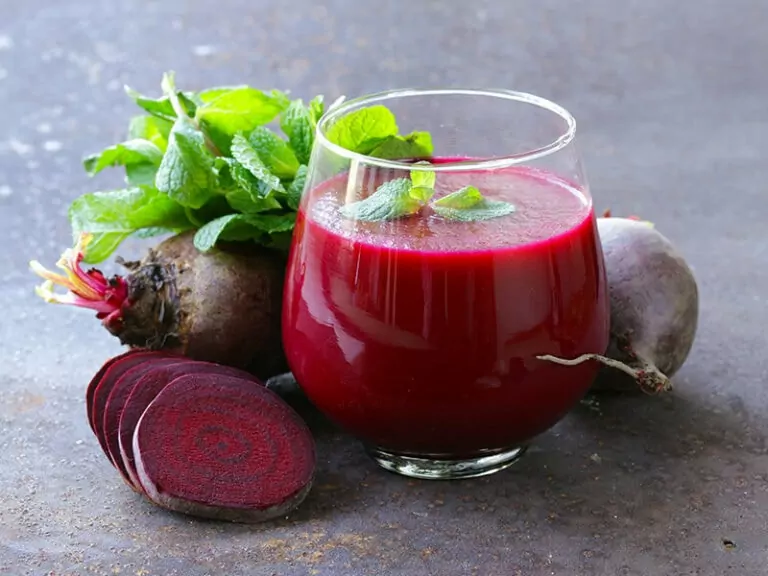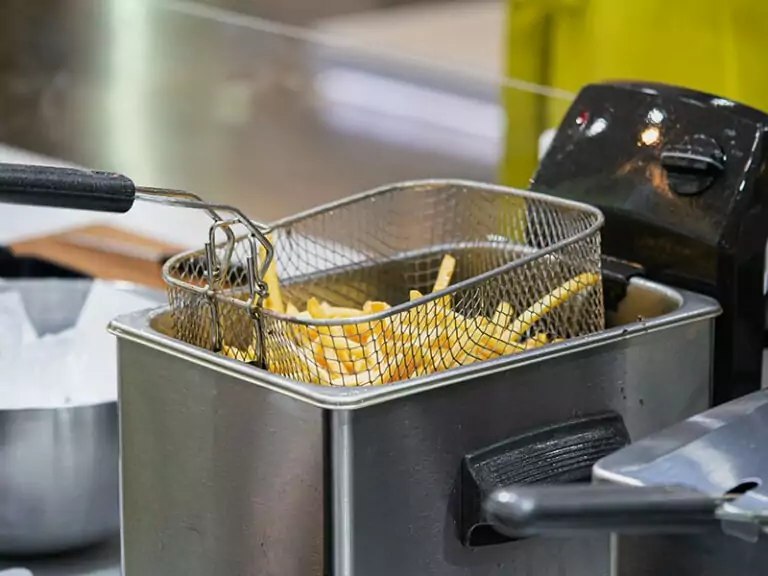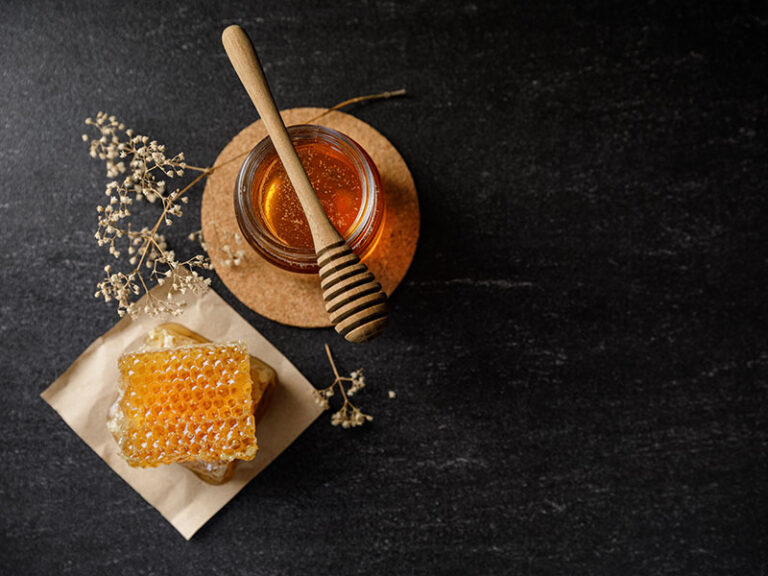What the ancient Greeks ate is an exciting topic since many modern diet trends, like paleo eating, are adopting this ancient style of food choice. The effectiveness of making use of simple ingredients of ancient Greek is incredible.
Ancient Greece was also home to the earliest nutritionists and physicians that set the foundation of nutrition science nowadays. Their god-sent knowledge about fueling them and thriving amidst harsh living conditions is practical even in the modern world.
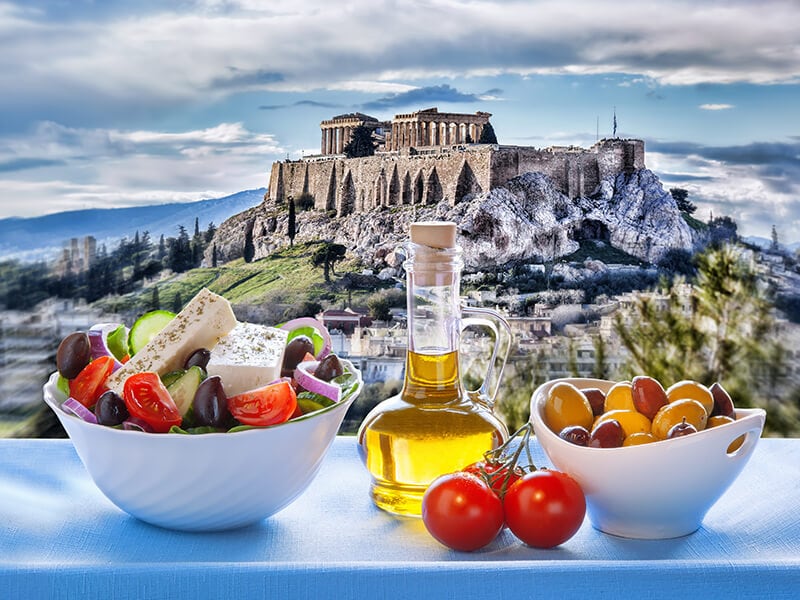
The Main Source Of Foods In Ancient Greece
In a pre-industrial society like ancient Greece, household agriculture was the primary food source. One house could not produce all necessary products, so small communities formed the local agora or marketplaces to trade meat, fish, wine, and other commodities.
The most popular forms were agriculture, animal husbandry, fishing, and hunting. However, meat consumption also depends on the wealth and position of the Greek families. Furthermore, there were some special facilities to produce bread, wine, and cheese.
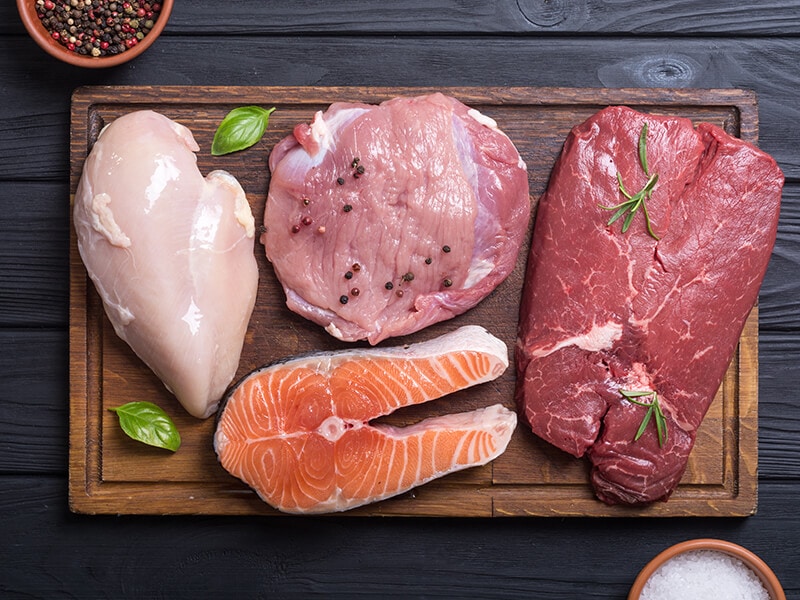
What Did The Ancient Greeks Eat?
Due to the limit in size and technology of agriculture, the Greek diet was very frugal. The foundation of their diet was laid on the Mediterranean triad of olive oil, wheat, and wine. The inclusion of meat and fish in the meals was what separated the rich from the poor.
| What Did The Greeks Eat? | Feature |
| Vegetables | A primary part of ancient Greek diets, including beans, cucumbers, cabbage, onions, and garlic. Usually made into soup or mashed, mixed with herbs. |
| Fruits | Appeared in many diets, often as desserts, fresh or dried forms. Olives and plums were the two iconic fruits. |
| Grains & Cereals | Commonly barley for making bread. Wheat later came through the slave trade. |
| Seafood | Typically octopus, squid, and crayfish. Seafood was more popular than land animal meat. |
| Legumes | Lentils were the main part of Greek diets. |
| Meat & Poultry | Rarely appeared in Greek diets. Usually used for sacrificial events. |
| Beverages | Mainly wine diluted with water. Beer and honey mead were also available. |
| Herbs & Spices | Commonly basil, cardamom, capers, coriander, thyme, oregano, mint, and sesame for adding fragrance. |
| Other Food | Cheeses or usually natural sweeteners. |
Vegetables
Fruit and vegetables were the dominant part of any ancient Greek meal. Legumes are considered the most popular component due to their capacity to re-fertilize soil for the next plantation.
They also consumed various vegetables such as beans, cucumbers, cabbage, onions, and garlic. Interestingly, standard vegetables and fruits like potatoes, tomatoes, and bananas didn’t appear in Greece until the discovery of America in the 15th century.
The main ways to cook vegetables were boiling, making soup, mashing, mixing with olive oil and herbs, or garon (Greek fish sauce). Due to the scarcity and cost of fresh vegetables in large cities, people in the lower class survived on dried versions of these greens.
Ancient Greeks had learned to turn roots and tuber vegetables into consumables, the most prominent of which were turnips, radishes, and carrots. Some green-leafy vegetables were arugula, cabbage, and cress.
Additionally, honey was used as a primary sweetener in their foods and desserts, like honey cakes.
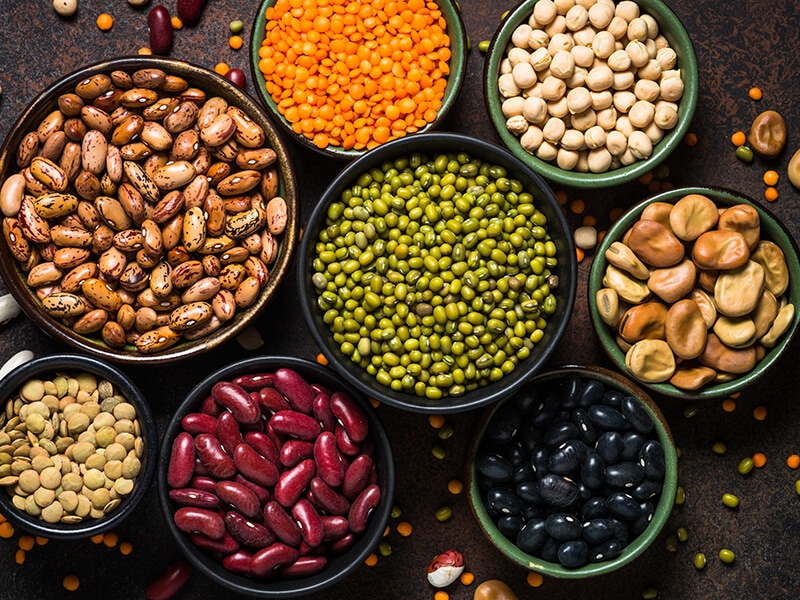
Fruits
Ancient Greeks people loved fruits. That’s why they appeared in many Greek poetry and mythologies. They even worshiped Dionysus, a god of fertility that blesses winemaking and grape harvesting. Greek people typically ate fresh and dried fruits as dessert.
Some fruits with the largest cultivation were grapes, figs, and pomegranates. Additionally, ancient Greeks learned to combine dried figs with wine for more flavor.
In addition, olives were the most iconic fruit in Greece due to their popularity. Unlike today, olives were not a luxurious product back then. Moreover, olive oil was the most used fruit product in cooking, even for trading across the Mediterranean.
Ancient people also domesticated plums, and they played a huge role in Greek diets. Some other mentionable orchard fruits were pears, quinces, and apples. Bergamot oranges were the first citrus fruit to appear in Greek culinary culture.
Typically, olives and grapes were cultivated over the hill slope, closer to a water source.
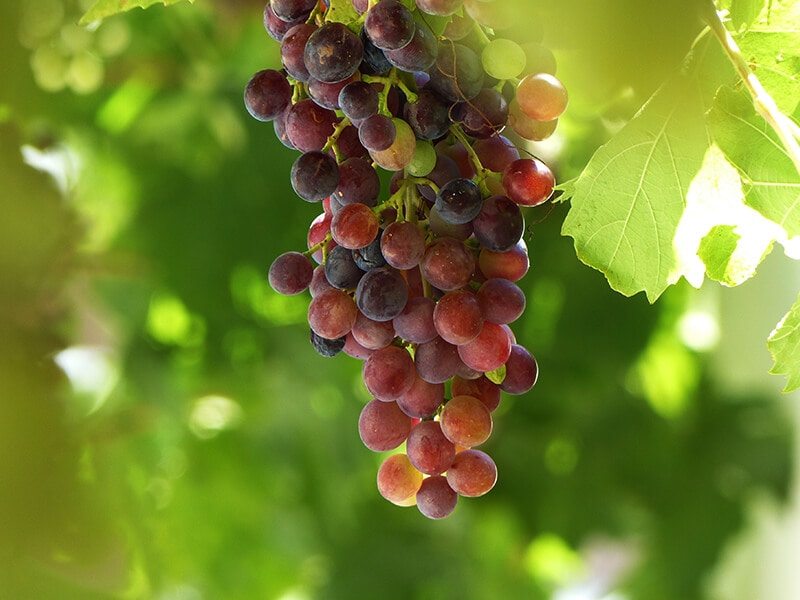
Grains & Cereals
The geography never favored Greece with fertile soil, so they grew their grains at the bottom of the valleys, where water sources were abundant. Cereals were the staple diet in any meal. Wheat and barley were the prime grains appearing in flatbreads or loaves.
Due to the simpler cultivation of barley, especially in regions of Greece with a Mediterranean climate, bread was made with the said grain. Barley bread was the most consumed item in ancient Greece for its fiber-rich and chewy nature, though its taste can be slightly bland.
Typically, ancient Greece roasted and crushed barley into coarse flour to make bread. In addition, only some Greek homes might have pottery ovens, enabling them to bake their bread. Bread became a commodity in the market after the 5th century BC.
On the other hand, wheat came to Greece through the slave trade in the past. Pancakes (“tiganites”) made with wheat flour were complemented by honey, milk, and olive oil.
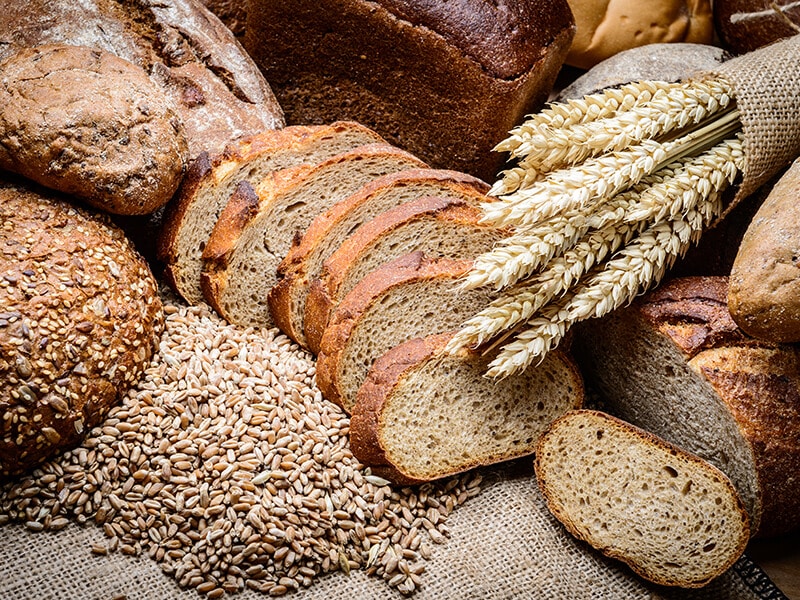
Seafood
The Greeks loved seafood as infertile land was never enough for expanding their livestock. Seafood, including octopus, squid, and crayfish, was common in Greece.
Fish like tuna, sea bass, and mullet were expensive, while smaller fish like anchovies and sprats were cheap. Interestingly, dried fish steaks even appeared to be in markets.
Other common saltwater fish were swordfish, red and sturgeon, and rays. Eels were especially sold at a very high price. Moreover, Those who didn’t have access to fresh fish usually eat the salted or dried variety.
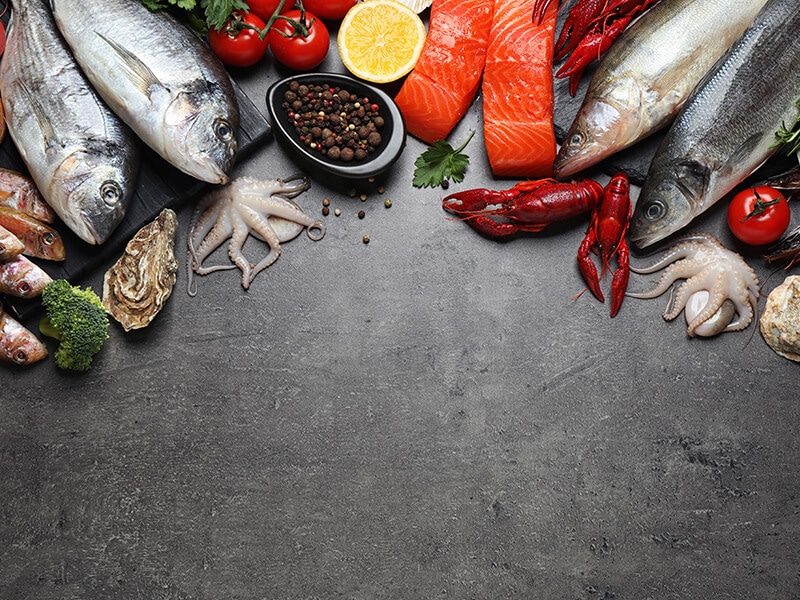
Legumes (Beans And Nuts)
To the average diet, legumes would be a substantial part. Among them, lentils was one of the first domesticated types of legume consumed by Greek.
Greeks also integrated other legumes, such as chickpeas, black peas, yellow peas, and garden peas, into their diet. Popular nuts were chestnuts, beechnuts, almonds, and walnuts.
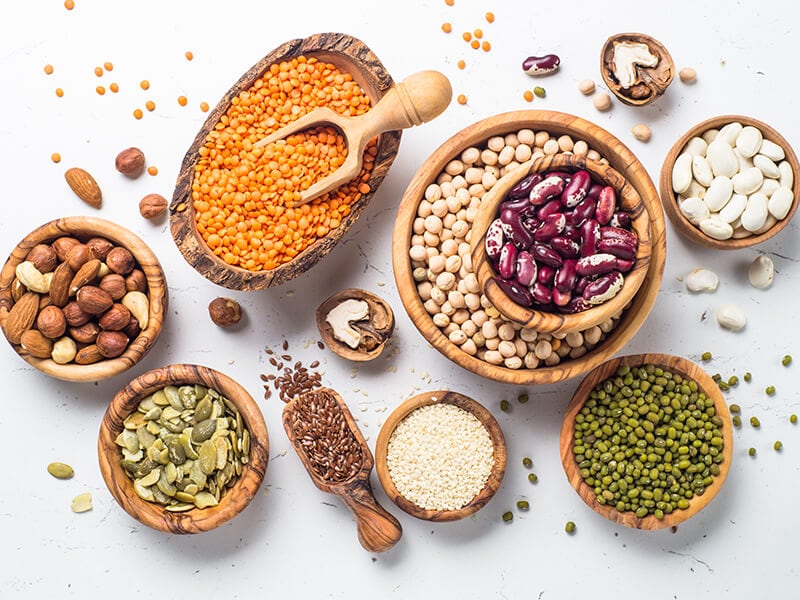
Meat & Poultry
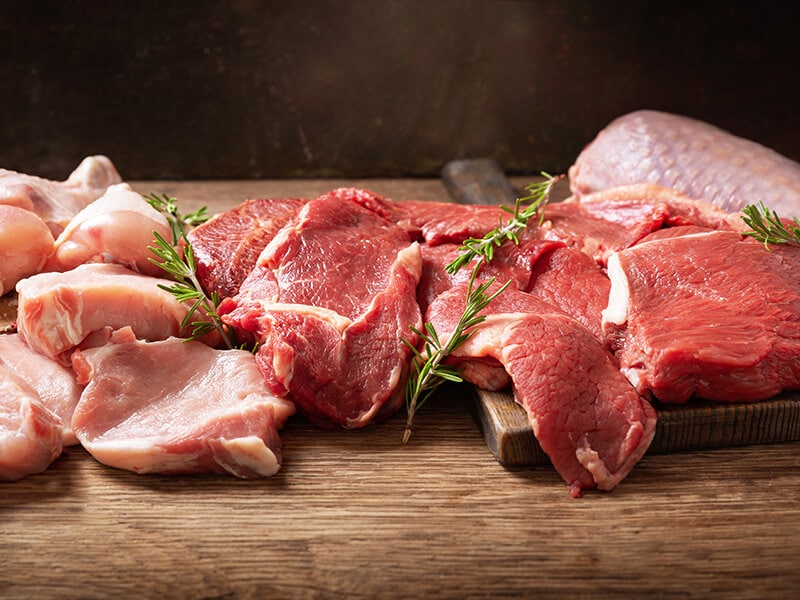
For religious reasons and the high value of meat in ancient times, ancient Greeks didn’t include it in their main diet. Some vegetarian followers abstain from meat completely.
Pythagoras (5th/6th c.BC) founded a belief that adopted strict vegetarianism. He taught his followers that people should give up meat entirely due to the abundance of alternative foods. (1)
In the countryside, people have more access to meat thanks to hunting and trapping. The primary sources of meat were hares, wild deer, and boar. Peasants also raised chickens and geese on their farms for eggs and meat.
Meat often appeared in the meals of wealthy people when it was either grilled on skewers. You could find plenty of kinds of meat as main dishes on the feast tables of the rich.
Roasted meat was often only consumed during festivals and at exceptional events by city residents. The absurdly high meat price prohibited many people from accessing fresh meat.
Before eating meat, people have to make a sacrifice to the Gods. It was a way people paid tribute to an animal’s life by offering it to a god. Some animals, such as hares and geese, were considered a lower life form, so they weren’t sacrificed.
Typically, only landowners could afford livestock like sheep, donkeys, pigs, and lamb. In big cities, every meat was costly except for pork. However, sausages were affordable both for the poor and the rich.
Learn about what the ancient Greeks drank in this video.
Beverages
The Greeks mainly drink water and wine as beverages. Diluted wine was the most popular drink for all people. They believed that pure wine was solely for barbarians. A perfect ratio to dilute wine was one part wine to three part water.
The islands of Lesbos, Chios, and Thasos were famous for their aromatic wine. Beer was available at the time, but it was by no means popular. Beer and honey mead was not a commodity since they only appeared on ancient festivals and holidays.
Ancient Greeks also sweetened their wine with honey. Alternatively, some therapeutic herbs were used to make medical concoctions. During the Neolithic period, pine resin was used in winemaking as they found its powerful effect in preserving wine.
Back in ancient times, Greek residents often dipped barley bread slices with wine to enjoy.

Herbs & Spices
Ancient Greeks learned to add herbs and spices to their diet for their flavors and therapeutic properties. Herbs and spices included basil, cardamom, capers, coriander, thyme, oregano, mint, and sesame.
Herbs and spices were widely used back then because their fragrance gave the wine an extra flavor. Ancient Greeks grew mint, cilantro, dill, saffron, and thyme.
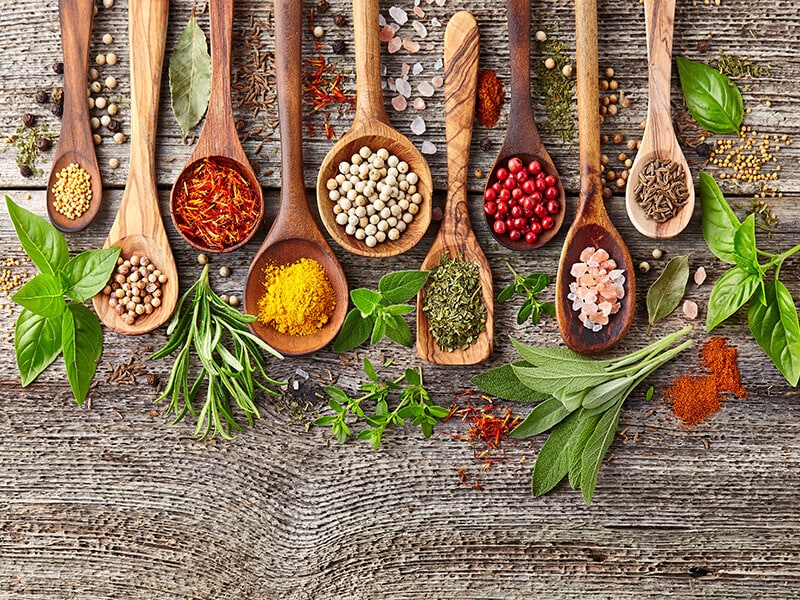
Other Food
Other sources of animal protein were cheese. People collected milk from sheep and goats to make cheese and “oxygala,” an early version of yogurt. Ancient European people are believed to have domesticated bees for honey by 500 A.D.
Interestingly enough, the Greeks didn’t drink milk because they deemed milk a drink for barbarians. Butter was used in baking, but people didn’t consume it directly in their meals.
Baked sweet treats like “plakous” and “korto plakous” were mostly paired with honey. Along with honey, cane juice was widely used in cuisine as a natural sweetener for food and drinks.
Vinegar and honey were also used in medicine to cure many illnesses, including coughs and colds. Archeological evidence proves that snails were also eaten in ancient Mediterranean cultures.
Recreate the Spartan black broth in your kitchen with this simple guide.
How Did Ancient Greeks Divide Their Meals In A Day?
The way ancient Greeks separated their meals was similar to today. However, there are some distinctions about what they consume in each meal. This reflected the Greek’s concept of the importance of each meal.
As the modern saying goes: “Breakfast like a king; lunch like a prince”, dinner like a pauper; people nowadays dictate that breakfast should be the heaviest and most nutritious meal of the day. However, that is contrary to what ancient Greeks believed.
Breakfast
Breakfast (“akratisma”) was considered a light meal (2) . Barley bread dipped in wine was the most common dish, accompanied by figs or olives. Some pancakes (“teganites”) also appeared on their breakfast tables.
Lunch
Lunch (“ariston”) was a snack in ancient Greece consisting of salted fish, bread, cheese, and olives. Some available fruits, such as grapes/raisins, pears, figs, apples, and nuts like walnuts and almonds, are also up for consumption.
Others may choose a more straightforward meal with bread, cheese, and olives.
Dinner
Greek people deemed dinner (“deipnon”) the most enjoyable meal. Nightfall was usually the time of luxurious dinner parties hosted by wealthy Greeks. You can easily find plenty of meat dishes in their feed.
They also had a dessert course called “tragimata,” which included fresh or dried fruits, like figs and grapes, or honey-based baked goods. To ancient Greek, dinner was the time for conversing with others about their days or situations.
Snack
“Meze-style” dishes or light meals included a variety of broad beans, lentils, chickpeas, peas, cheese, bread, olives, fruits, eggs, and nuts. Seafood, including seabream, eels, and red mullet, would also appear in these meals.

FAQs
You’ve just learned some interesting facts about what ancient Greek ate throughout the day. Here is some more fascinating information about this topic.
The Dietary Philosophy Of The Greeks Has Many Things To Teach Us
Even though ancient Greece was one of the earliest civilizations in the world, their understanding of what to eat and how to eat them was mind-blowing. They had known the importance of food on health long before nutrition science was a thing.
Hippocrates said: “Let food be your medicine.” The ancient Greeks had a wide range of foods in each meal but in smaller quantities. They preferred a diverse diet to an abundant one. This is also the advice of modern nutritionists nowadays.
Modern people have many things to learn about what ancient Greek ate in the past. Before leaving, let me and other readers know some facts you know about Greek cuisine in the comment. Also, share this with your friends interested in ancient wisdom about health.
References
- C;, L. (no date) Vegetarian Nutrition: Past, present, future, The American journal of clinical nutrition. U.S. National Library of Medicine.
- Greek cuisine (2023) Wikipedia. Wikimedia Foundation.

